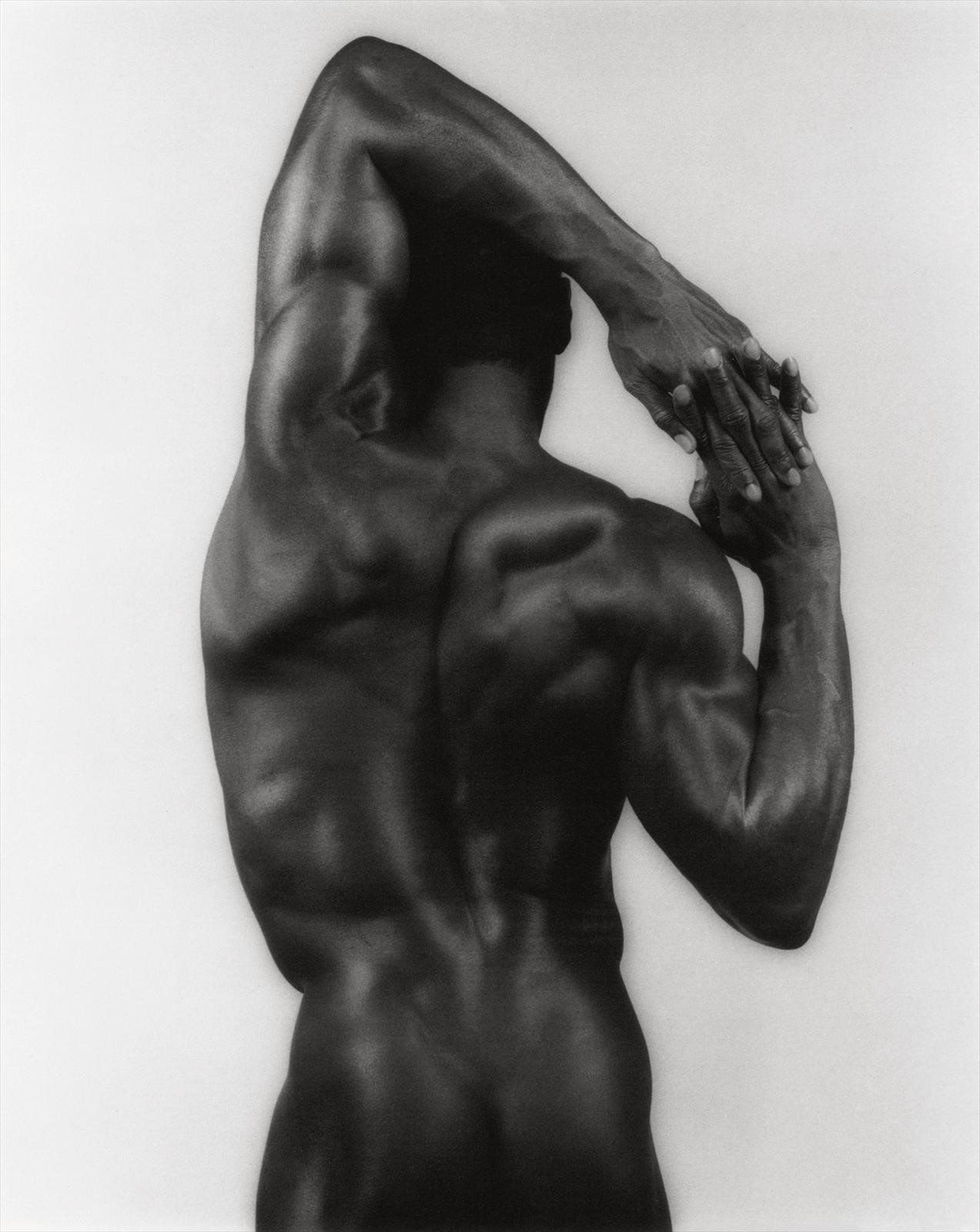In celebration of Robert Mapplethorpe’s erotic and aesthetic vision, here are AnOther’s top five facts about the photographer
As the Grand Palais in Paris hosts a major retrospective of the work of Robert Mapplethorpe, two new books, published by Schirmer/Mosel, examine the photographer’s favourite subjects – the human body and botany. The Black Book, which contains portraits of nude African American men – and in 1986 was subject to public prosecution under the charge of pornography – is now recognised as one of the most significant contributions to 20th century discussions of art and sexuality.
Flowers, first published posthumously, contains images no less surprising. At first glance, the images are of still life blossoms, but to look more closely is to see the absolute clarity of Mapplethorpe’s composition, with curling petals revealing hidden stigmas. Indeed, Mapplethorpe’s botanic photography is no less erotic than his nude portraits.
Here, AnOther examines the late photographer’s life and work through five key facts.
1) “I come from suburban America. It was a very safe environment and it was a good place to come from in that it was a good place to leave.” So said Mapplethorpe of his childhood home in Floral Park, Queens, USA, where he was born in 1946.
2) Mapplethorpe’s first preoccupations with the human form were not realised through photography but through drawing, painting and sculpture, which he studied at the Pratt Institute in Brooklyn from 1963. After experimenting with collage, in the vein of Joseph Cornell and Marcel Duchamp, Mapplethorpe began to take photographs with a Polaroid camera in the 1970s, though this was quickly superseded by a Hasselblad medium-format camera.
3) Patti Smith and Robert Mapplethorpe shared lifelong intimacy and artistic vision. They lived together in the Chelsea Hotel, and from the late 1960s, Smith was Mapplethorpe’s muse. Most famous are his monochromatic portraits of Smith, the embodiment of 1970s punk, including the iconic portrait on the cover of her 1975 album, Horses. Though Mapplethorpe is famous largely for his nude images, he trained in celebrity portraiture. Andy Warhol, Richard Gere, Joan Armatrading, Louise Bourgois, Debbie Harry and Grace Jones were all his subjects.
4) Controversy pooled around Mapplethorpe during the 1980s. By this time, he had heavily documented New York’s underground sex scene, including frank depictions of bondage and sadomasochistic BDSM. His exhibition of nudes in 1986, called Black Males, received criticism as it was perceived as exploitative. In the photographs, Mapplethorpe treated his subjects as sculptures, focusing on certain forms and positions of the body, in pursuit, so the photographer argued, of the Platonic ideal.
5) In the summer of 1989, the exhibition called The Perfect Moment – comprised of explicit homoerotic photographs and self-portraits depicting sadomasochistic sexual practices – garnered national attention and initiated a debate over public funding of the arts, censorship and the obscene. The debate heightened as one gallery in Washington refused to display the images, whilst the Cincinnati Contemporary Arts Centre and its director Dennis Barrie were charged with obscenity. Whilst the question of propriety loomed large, the biggest issue was the nature of freedom of speech. Was artistic expression free from censorship, and should public money fund obscenity?
Mapplethorpe died in Boston in 1989 from AIDS, aged just 42, though he continues to provoke as an artist and man. At the request of Patti Smith, his photography has been exhibited alongside Michelangelo in Florence. His work, so controversial during his lifetime, is finally being seen in the context he intended.
Robert Mapplethorpe is at the Grand Palais, Paris, until July 13. The Black Book and Flowers are out now, published by Schirmer/Mosel.
